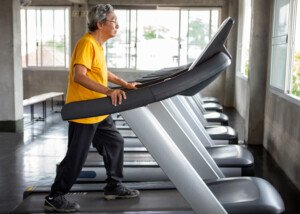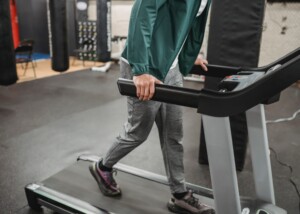Should you avoid walking any more than you absolutely have to if you have pain from knee osteoarthritis?
Can walking make your situation worse, especially if it’s done willfully for exercise?
Osteoarthritis of the knee joint is quite common, and over time, gets worse, causing increasing amounts of pain.
Researchers at Baylor College of Medicine wanted to know if walking for exercise would have a positive effect on people over 50 who had osteoarthritis.
They found that deliberate walking for exercise actually reduced new-onset pain from the degenerative disorder.
But can walking stop the progression?
The paper, published in Arthritis & Rheumatology, says that walking can be effective at slowing down the progression, but not permanently preventing it from getting worse.
Participants in the study, who reported that they walked for exercise, experienced a 40 percent reduced chance of new frequent knee pain, when compared to sedentary subjects.
Not everyone with a confirmed osteoarthritis (via X-rays) has knee pain on a daily basis.
These are the patients for whom walking may have the greatest benefits. Walking may slow down the progression of the disease.
Those who already have daily knee pain are still encouraged to walk, but those without daily knee pain are, in particular, urged to walk more.
The research study points out that even those with daily pain plus bow-leggedness from the disease should make an effort to walk for exercise.
Are you bow-legged?
When I was a personal trainer I had a client who was 55 and slightly bow-legged, had a loppy gait, was overweight and had osteoarthritis.
I instructed her to walk on a treadmill without holding on. Her initial instinct was to grab the side rails or the bar in front.
I said no, don’t do that; walk the way that nature intended your body to walk.
The human body didn’t evolve to walk while holding onto something for support.
Our spinal columns are designed to support human movement without our hands hanging onto anything.
Over time, my client’s gait, off the treadmill, improved. I could clearly see that it wasn’t as off-kilter, though the bow-leggedness was still there.
She reported less pain, too. Her gait was noticeably smoother in appearance.
This was all the result of walking up to four mph on a treadmill (short duration) without holding on.
When one clings to a treadmill, this alters gait, throwing it off, making it unnatural. This is the last thing that diseased knees need.
Of course, I started her out at a slow speed, and gradually worked her up to faster speeds.
This had an obvious carryover effect to her off-treadmill ambulation.
 Lorra Garrick has been covering medical, fitness and cybersecurity topics for many years, having written thousands of articles for print magazines and websites, including as a ghostwriter. She’s also a former ACE-certified personal trainer.
Lorra Garrick has been covering medical, fitness and cybersecurity topics for many years, having written thousands of articles for print magazines and websites, including as a ghostwriter. She’s also a former ACE-certified personal trainer.
.



























